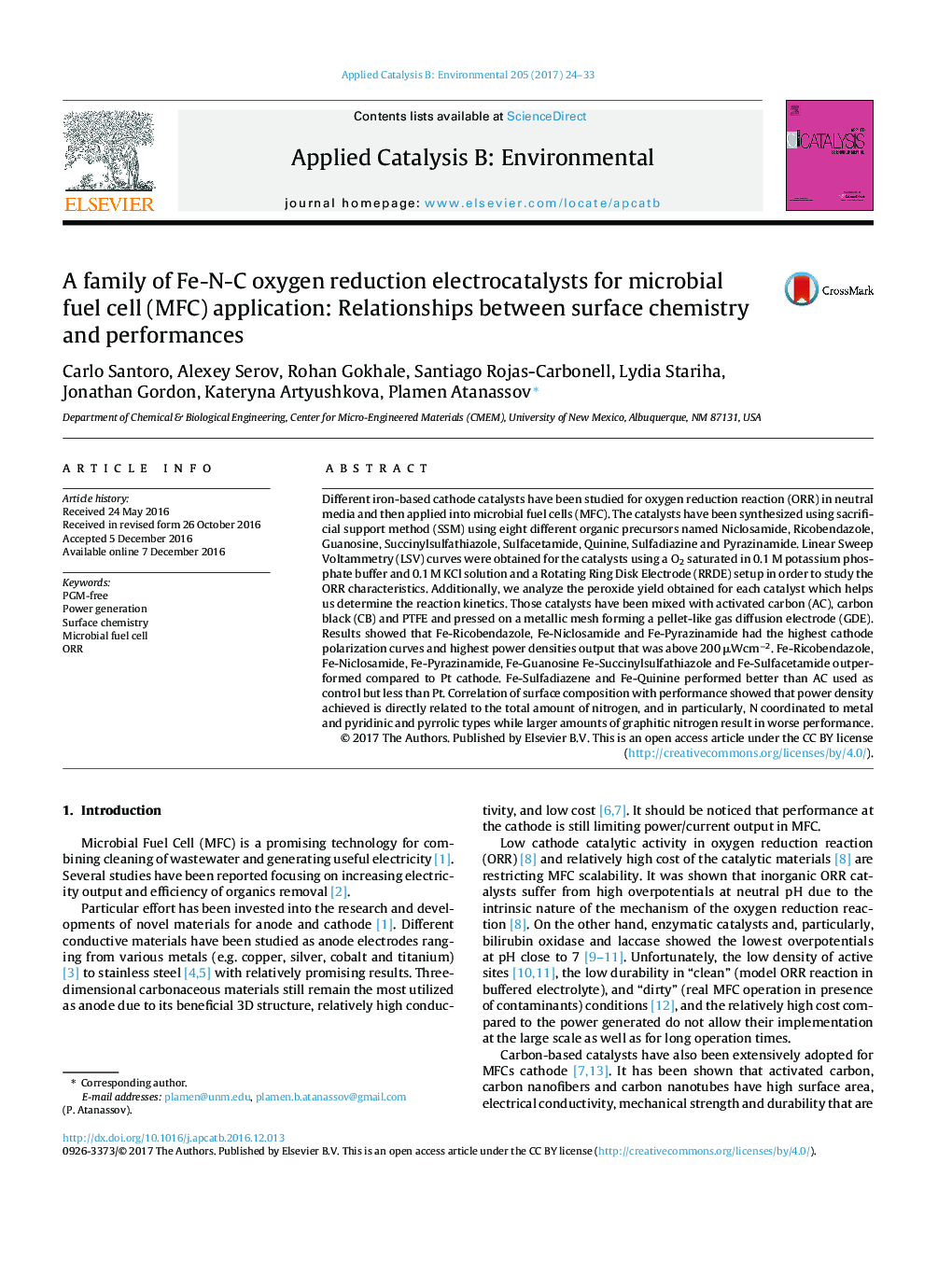| کد مقاله | کد نشریه | سال انتشار | مقاله انگلیسی | نسخه تمام متن |
|---|---|---|---|---|
| 6454281 | 1418815 | 2017 | 10 صفحه PDF | دانلود رایگان |

- Novel precursors were used to fabricate iron based catalysts.
- RRDE current was well correlated with cathode polarization current and power generated.
- Several Fe-based catalysts outperformed Pt.
- Fe-Ricobendazole, Fe-Niclosamide and Fe-Pyrazinamide had power density above 200 μWcmâ2.
- Power density is directly related with N coordinated to metal and pyridinic and pyrrolic types.
Different iron-based cathode catalysts have been studied for oxygen reduction reaction (ORR) in neutral media and then applied into microbial fuel cells (MFC). The catalysts have been synthesized using sacrificial support method (SSM) using eight different organic precursors named Niclosamide, Ricobendazole, Guanosine, Succinylsulfathiazole, Sulfacetamide, Quinine, Sulfadiazine and Pyrazinamide. Linear Sweep Voltammetry (LSV) curves were obtained for the catalysts using a O2 saturated in 0.1 M potassium phosphate buffer and 0.1 M KCl solution and a Rotating Ring Disk Electrode (RRDE) setup in order to study the ORR characteristics. Additionally, we analyze the peroxide yield obtained for each catalyst which helps us determine the reaction kinetics. Those catalysts have been mixed with activated carbon (AC), carbon black (CB) and PTFE and pressed on a metallic mesh forming a pellet-like gas diffusion electrode (GDE). Results showed that Fe-Ricobendazole, Fe-Niclosamide and Fe-Pyrazinamide had the highest cathode polarization curves and highest power densities output that was above 200 μWcmâ2. Fe-Ricobendazole, Fe-Niclosamide, Fe-Pyrazinamide, Fe-Guanosine Fe-Succinylsulfathiazole and Fe-Sulfacetamide outperformed compared to Pt cathode. Fe-Sulfadiazene and Fe-Quinine performed better than AC used as control but less than Pt. Correlation of surface composition with performance showed that power density achieved is directly related to the total amount of nitrogen, and in particularly, N coordinated to metal and pyridinic and pyrrolic types while larger amounts of graphitic nitrogen result in worse performance.
Several organic precursors have been used to fabricate Fe-based catalysts using sacrificial support method. Those catalysts were then included in air breathing cathodes for microbial fuel cells working at neutral environment. Electrochemical performances and surface chemistry were measured and related.256
Journal: Applied Catalysis B: Environmental - Volume 205, 15 May 2017, Pages 24-33